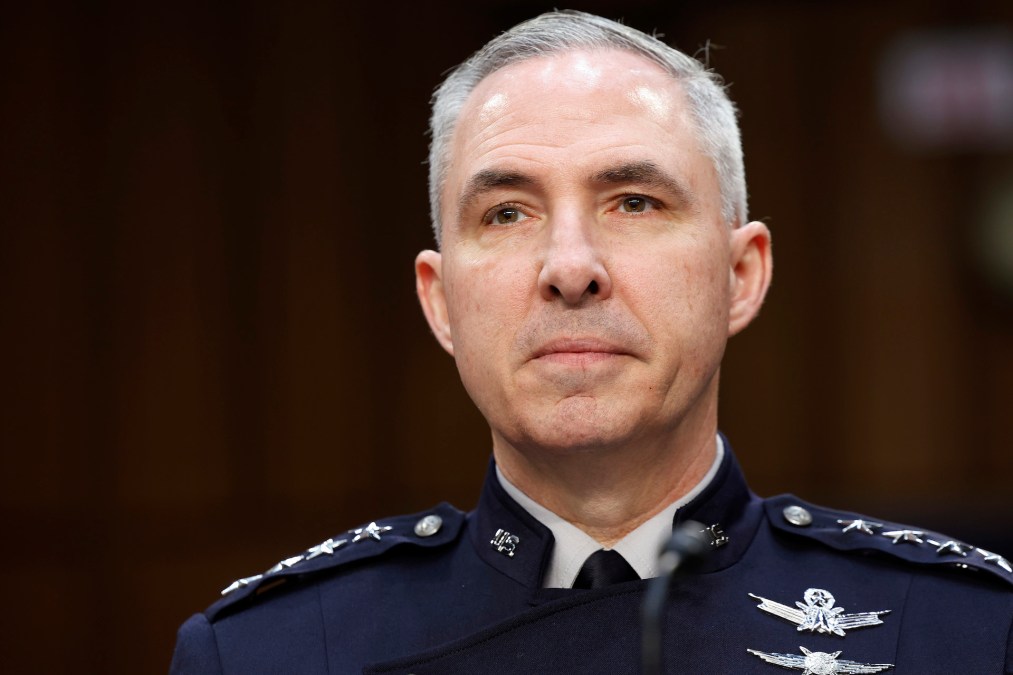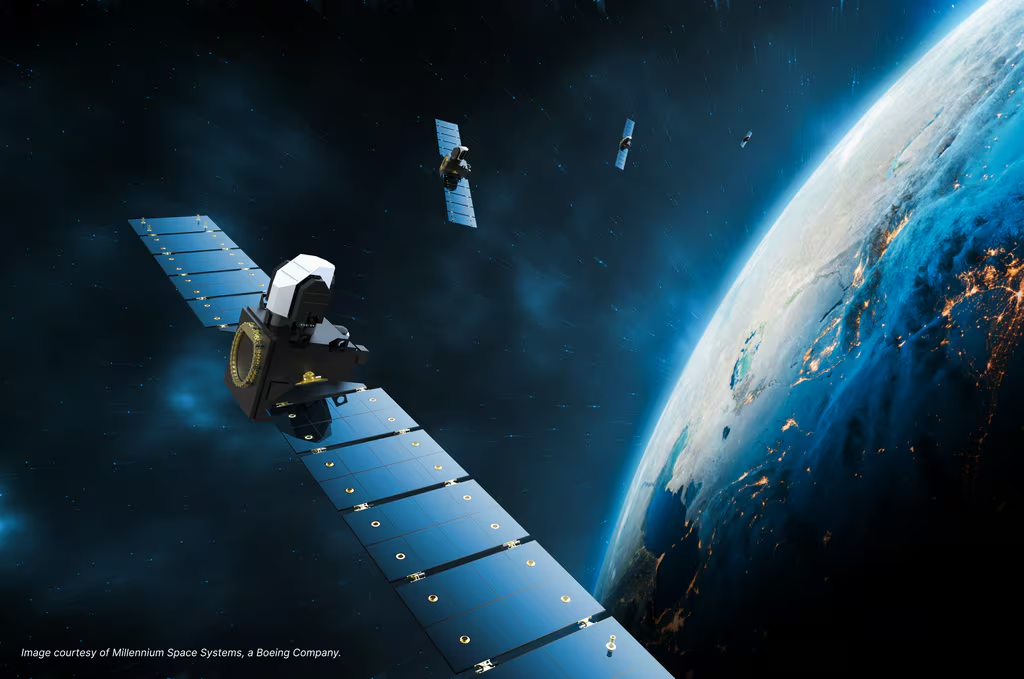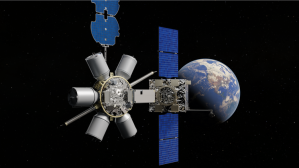Space Command moves to support new capabilities, strategies for warfare in space

COLORADO SPRINGS, Colo. — As it looks to prepare for potential conflict in the space domain, U.S. Space Command is looking to operationalize new capabilities and strategies that will give the organization an edge over adversaries.
Speaking during his keynote speech at Space Symposium on Tuesday, Spacecom Commander Gen. Stephen Whiting outlined ongoing initiatives to deter and defeat adversaries. The efforts are framed by the combatant command’s new “elements of victory,” and include moves to operationalize new capabilities, develop new technologies and draft two new strategies — one focused on experimentation and another on AI and machine learning.
“Over the past year at U.S. Space Command, we’ve developed elements of victory: our best military judgement for what we think we need to win in a conflict,” Whiting said. “These five elements of victory are informed by lessons learned in other domains — from the best thinking across our Joint Force, exercises and modeling and simulation — and they tell us what we need for war-winning advantage and how we will win.”
Part of the initiative focuses on getting new capabilities for warfighters across Spacecom’s different mission areas. For example, Whiting said the command is working to operationalize a data-fusion system that can create a single common operating picture for missile warning and missile defense missions.
Announced last year as a pilot program to improve data-fusion capabilities, the effort looked to address Spacecom’s ability to digest and view space domain data from multiple systems on a single screen. Since initiating the program, the command has focused on developing a data integration layer for missile warning and missile defense systems and is now demonstrating the capability, Whiting noted.
“Now we’re moving forward with operationalizing this system and placing it on our [Joint Operations Center] floor,” he said. “In the coming months, we’ll be adding additional missions to that program.”
At the same time, Spacecom continues to support research and development of technologies to enable what it calls “dynamic space operations” — or the ability to quickly and continuously maneuver systems on-orbit in order to address emerging threats in that domain.
While the command has repeatedly stressed the need for more maneuverable satellites, the Space Force has put only small amounts of money into research for the capability — and whether or not that funding will continue in future years remains up in the air. Whiting stressed, however, that development of space maneuver capabilities is imperative for Spacecom, especially given recent advancements in China’s ability to freely move their on-orbit satellites.
To support development, the command will co-sponsor an effort with SpaceWERX — the Space Force’s technology innovation arm — that focuses on sustained space maneuver, according to Whiting.
“We will soon be identifying 10 proposals for $1.9 million each in funding over a 15-month period of performance,” he said. “This effort will continue to invest in the most promising technology from commercial industry to help us solve the sustained space maneuver challenge, so we can bring this joint function to the space domain.”
Other Spacecom initiatives include the deployment of an additional next-generation mobile radar for space domain awareness in the Indo-Pacific; working with organizations across the Pentagon to field more agile command-and-control capabilities; and meeting new demands for offensive and defensive space control.
Along with additional technologies, Whiting said Spacecom is drafting two new strategies that will help the command better prepare for conflict in space.
“To ensure we maximize our readiness for day-to-day operations so that we are ready for conflict, we are operationalizing the command’s first-ever experimentation strategy and artificial intelligence and machine learning strategy,” Whiting said. He added that the priorities for these strategies focus on space fires, operational space command and control, missile defeat effects, enhanced battlespace awareness, cyber defenses and the command’s business processes.






